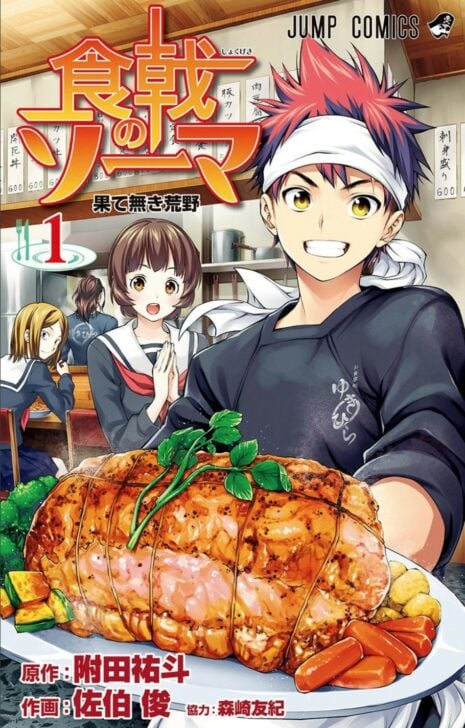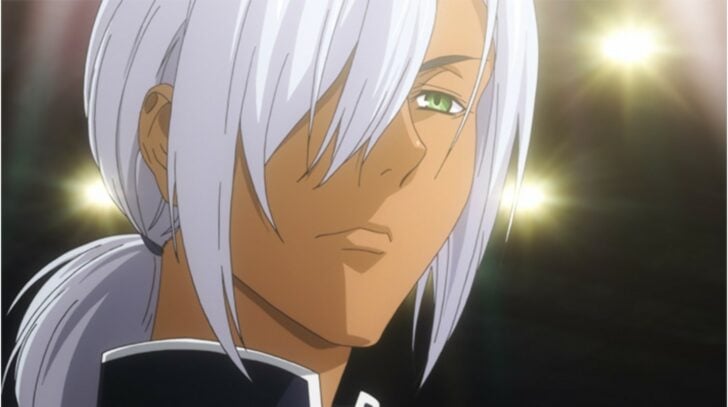Share this link via
Or copy link
Below are navigation links that will take you to the main text and navigation menus.
26,551 first names, 70,620 last names, 333,585 kanji variations.
one of the best Japanese name search tools for your baby!

Image by: Food Wars! Shokugeki no Soma Season 5 Ep 3 ©Yuto Tsukuda, Shun Saeki/ Shueisha, Food Wars! Shokugeki no Soma Committee 5
Contents
Food wars! Shokugeki no Soma is a manga series written by Tsukuda Yuto and illustrated by Shun Saeki. Teenager Soma loves cooking and entertaining people with his creative dishes. His dream was to one day work at his father’s restaurant ‘YUKIHIRA’ as a head chef, however, Soma’s father decided to close down his shop to take a job overseas and enroll Soma into the prestigious cooking school Totsuki culinary academy. Graduating Totsuki culinary academy is what all junior chefs hope yet its graduation rate is as extremely low as 1%. The story follows Soma’s journey through his cooking school life filled with excitement and delicious food!

Image by: Food Wars! Shokugeki no Soma comic 1 ©Yuto Tsukuda, Shun Saeki/ Shueisha
The Japanese title is the same, Shokugeki no Soma, but without the phrase ‘Food wars’. ‘Shokugeki’ is a word used in the series which means a cooking duel between the students of Totsuki culinary academy.

Image by: Food Wars! Shokugeki no Soma Jump official website ©Yuto Tsukuda, Shun Saeki/ Shueisha
In Japanese culture, names have significant meanings that are supposed to represent you as a person. Names can be expressed in hiragana, katakana, and kanji. Let’s find out the meanings of some names of the future master chefs!

Image by: Food Wars! Shokugeki no Soma Season 5 Ep 3 ©Yuto Tsukuda, Shun Saeki/ Shueisha, Food Wars! Shokugeki no Soma Committee 5
Soma, the main character of the series is a passionate young chef who grew up watching his father cooking and hopes to be like him one day. ‘Yuki’(幸) means fortune, ‘Hira’(平) means flat, ‘So’(創) means creation, and ‘Ma’(真) is the truth.

Image by: Food Wars! Shokugeki no Soma Season 2 Ep 15 ©Yuto Tsukuda, Shun Saeki/ Shueisha, Totsuki academy movie researchers
Born into the renowned Nakiri family, Erina is a spoilt child who looks down at almost everyone. Not only her background but her ability to taste any ingredients accurately (the God-tongue) is also one of the facts that makes her notable. ‘Na’(薙) is to slash something, ‘Kiri’(切) means to cut, and Erina is written in Hiragana, however, there are plenty of ways to write her name in kanji. Check out how to write Erina.

Image by: Food Wars! Shokugeki no Soma Season 4 Ep 8 ©Yuto Tsukuda, Shun Saeki/ Shueisha, Food Wars! Shokugeki no Soma Committee 4
Satoshi, an easy-going but somehow mysterious 2nd grader who stays at the school dormitory. ‘I’(一) is one, ‘Shiki’(色) means color, and ‘Satoshi’(慧) means Agile.

Image by: Food Wars! Shokugeki no Soma Season 1 Ep 24 ©Yuto Tsukuda, Shun Saeki/ Shueisha, Totsuki academy movie researchers
Akira is a confident and talented 1st grader at the Totsuki culinary academy. He has an excellent sense of smell and is a master of spices. ‘Ha’(葉) is a leaf, ‘Yama’(山) is a mountain, and his name is written in Katakana. This is a common Japanese name and there are many ways to write Akira.

Image by: Food Wars! Shokugeki no Soma Season 4 Ep 10 ©Yuto Tsukuda, Shun Saeki/ Shueisha, Food Wars! Shokugeki no Soma Committee 4
Rindo is a successful 90th Generation Totsuki Academy alumna who is curious about all ingredients in the globe. She will not hesitate to taste anything and is not scared to use unusual ingredients in her dishes. ‘Ko’(小) means small, ‘Bayashi’(林) means woods. ‘Rin’(竜) is a dragon, and ‘Do’(胆) is the liver but when you read the two kanji together it becomes ‘Rindou’(竜胆) which is a bellflower.
Here are some useful phrases from Food wars! Shokugeki no Soma that will help you along with your Japanese studies!

Image by: Food Wars! Shokugeki no Soma comic 1 Ep 1 ©Yuto Tsukuda, Shun Saeki/ Shueisha
This is Soma’s signature phrase when he serves a dish. It is a polite way to say ‘help yourself’. You can also use ‘召し上がれ Meshiagare’ or ‘食べてください Tabete kudasai’.

Image by: Food Wars! Shokugeki no Soma comic 1 Ep 1 ©Yuto Tsukuda, Shun Saeki/ Shueisha
Another one of Soma’s signature phrases. This is a short form of the phrase ‘Osomatsu sama deshita’(お粗末様でした) which is a common phrase used when you cook for someone and It means thank you for eating. Modesty is one of the important cultural etiquettes in Japan and is expressed in many ways. The word ‘Somatsu’(粗末) itself means poor quality, so this phrase is actually a humble expression to make the person feel comfortable and let them know it was not a big deal.
Sort by Most Kanji Variations
This is the order of names with many variations of kanji.
Basically, names with more variations are more common and familiar to the Japanese.
Sort by Most Viewed
The names are sorted by the number of times they have been viewed on this site. This ranking is based on the behavior of users around the world, including Japan, so it does not mean that the names are commonly viewed by Japanese people only.
Please note that just because a name has been viewed more times does not mean it is a famous name in Japan.
What is Hiragana?
Hiragana is a syllabary used in written Japanese, which originated from the cursive style of Kanji.
What is Katakana?
Katakana is also a Japanese syllabary. Basically, the characters don't have any meaning by themselves, they only represent the sounds.
Japanese try to express the words came from foreign languages with the most similar sounds in Japanese using Katakana.
What is English Transcription?
English Transcription is a term used when translating Japanese names into English. It represents a romanised version of the name with the aim of reproducing the pronunciation as accurately as possible. English Transcription can also be used for name searches.
Japanese Style Nickname
In Japan, nicknames are commonly used to express familiarity and affection. Here are key features and contexts:
Shortened Forms: Names are often shortened for ease and intimacy, such as 'Yuki' from 'Yukiko' or 'Taka' from 'Takashi'.
Suffixes: Terms like 'chan' for girls and 'kun' for boys are added to names among close friends and family. However, 'chan' can also be used for boys during childhood. Additionally, among adults who are very close, like best friends, 'chan' may still be used to convey affection and familiarity. More Details
Usage and Cultural Aspects: Nicknames are typically used in informal settings among friends, family, or close colleagues, and are not suitable for formal or professional environments. The use of a nickname suggests a degree of intimacy and should reflect the nature of the relationship. Young people often demonstrate creativity in their social interactions by crafting unique nicknames.
Note: In Japanese, the long vowel sound is indicated by a special character called a "chōonpu" (長音符), which looks like a horizontal dash (ー). This character serves to extend the duration of the vowel sound immediately preceding it. For instance, in the name "あーちゃん" (A-chan), the "あ" (A) is extended, producing a prolonged "ah" sound, similar to the "a" in "father."
Households?
The names are sorted by the number of Japanese households where the surname is used.
The more households there are, the more famous and common the surname is.
About this site's data of last names
